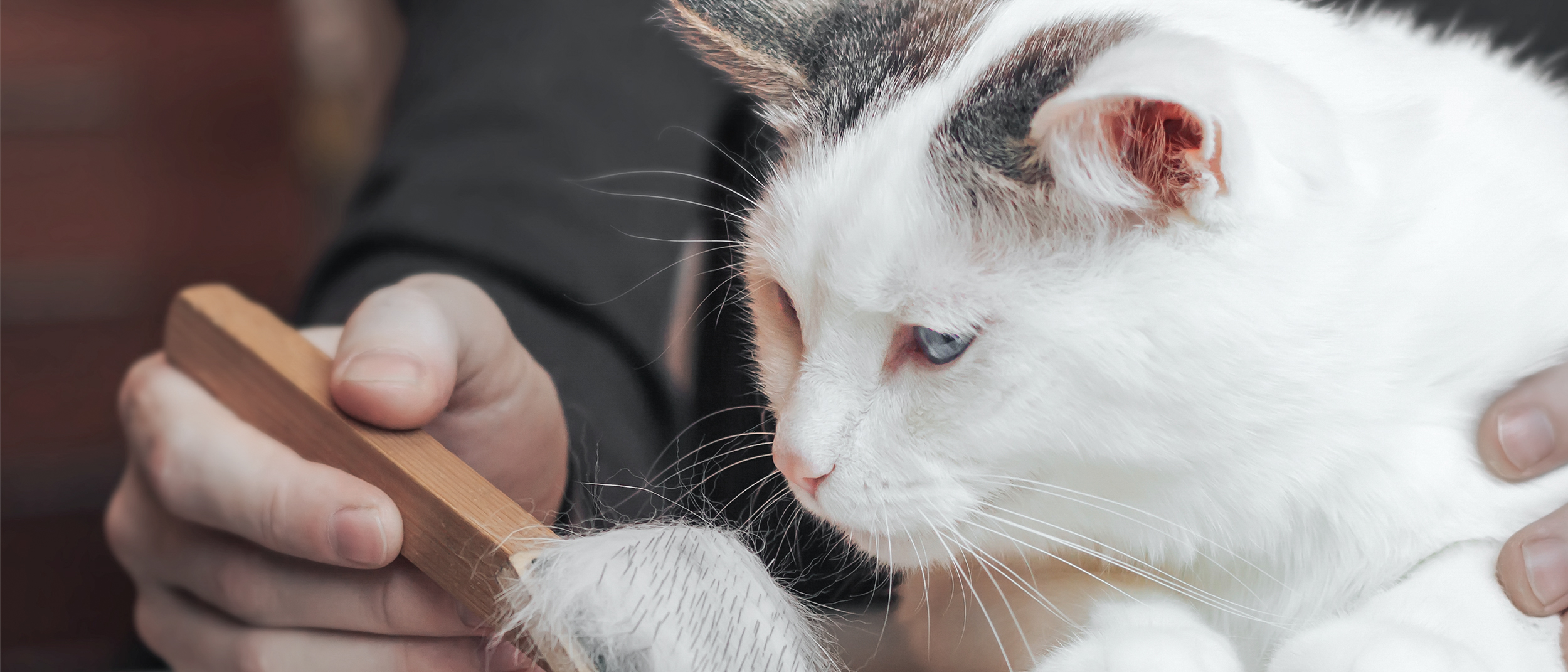My cat is losing its hair
Article

It's natural to always want your cat's coat to look healthy and glossy, which is why it can be problematic to see them suffering with hair loss. While some shedding of hair is completely natural, too much hair loss can be a signal that your cat has a more serious issue.
Hair loss in cats from ringworm
Ringworm is one of the most common causes for hair loss in cats. This fungal infection is highly contagious and frequently occurs among kittens or cats living in groups. The main agent is a fungal spore, microsporum canis, which can be contracted from a contaminated animal or environment, and which remain infectious for several months.
The spore enters your cat's skin, especially through any bites, scratches, and the infection begins to develop in the outermost layer of skin and their hair follicles. If your cat has any skin damage in an area they find hard to reach for grooming, such as their face, they're at greater risk of ringworm as grooming may help to get rid of infectious material before it develops. There's also a higher risk of the infection taking hold if your cat's immune system has been compromised, such as from illness or medical treatment.
The signs of ringworm can be very different between cats, but you're likely to notice hair loss in irregular or circular patches, along with reddish patches of skin which may be flaky. Their hair may also break easily or appear abnormal.
Ringworm can be treated and eliminated, although it does involve several stages of treating the infection itself, destroying any remaining spores and thoroughly sanitizing your cat's environment. Ringworm can be highly contagious for humans in the home too, so if you spot any signs in your cat, it's important to consult a vet as soon as possible to prevent further spread.

Hair loss due to a cat's excessive grooming
Grooming is a crucial way cats keep themselves clean and their skin healthy. However, excessive grooming can lead to hair loss and other side effects.
When a cat grooms, it uses its rough tongue to rid its coat and skin of parasites, dead hair, debris and other irritants. But its tongue can also break its hairs, resulting in hair loss. If your cat over-grooms itself in the same spot on their coat, you will eventually notice the patch becoming balder or the hair being of a poorer quality. Because your cat is also ingesting extra dead hair, they may start to suffer with hairballs as their digestive system can't process and get rid of it effectively.
Excessive grooming could be a sign of behavioral issues—if your cat is particularly stressed, it may use grooming as a substitute behavior to calm itself down. It can also be caused by boredom; if your cat's environment isn't providing stimulation, it may groom more than necessary. If you notice signs of over-grooming in your cat, it's important to consult a vet who will be able to discuss the issue and help to identify the causes of aggravation.
Hair loss due to your cat's diet
If your cat's food isn't providing them with everything their skin and coat need to stay healthy, your cat may begin to suffer from hair loss or poor-quality hair.
A cat's skin and hair need a significant amount of protein to function and grow effectively; around 30% of their daily protein intake is used on renewing and building their skin.1A lack of high-quality protein in their diet, or protein which is too difficult to digest, can result in thinner, brittle hair and even hair loss. Vitamin A and vitamin E are also vital in keeping your cat's coat healthy and preventing hair loss; these regulate cell growth and act as natural antioxidants. A deficiency of these can result in problems with how your cat produces the main component of hair, keratin.
In general, hair loss can be easily rectified in cats through a combination of medical treatment, environmental adjustments and dietary choices. Visit your vet, who'll be able to identify the cause of your cat's hair loss and the best possible solution.
1 Pibot et al, eds. Encyclopedia of Feline Nutrition, 2010
Related Articles
Find a vet
Like & share this page